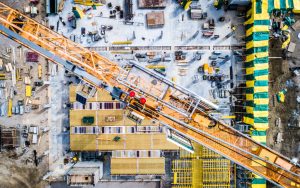The future is looking green sooner than most climate warriors anticipated. If there’s anything positive the pandemic achieved, it’s bringing awareness to more people about how the environment is intrinsically tied to the core of human existence. The only way for society to move forward from the pandemic with minimal risks on the horizon is through sustainability.
So, if you’re building a house, a garage, an office building, or any infrastructure at all, adopting sustainable practices and materials must already be your priority. Fortunately, this green trend is gaining such incredible momentum that you won’t find it difficult to find contractors, engineers, and architects who are sold on the idea of eco-friendly means.
That doesn’t mean, however, that you must leave everything in their hands. As the soon-to-be homeowner, you have the responsibility to know what sustainability really means for your construction project and just how you’re contributing to the fight against climate change.
Location and Availability Matters
It’s not enough to say you’re using recyclable materials. The value of salvaged wood, recycled steel, and other eco-friendly goods you’ll use in your construction decreases with logistics. If you’re getting them overseas, the shipment amplifies the carbon footprint of your construction. 2.5 percent of the world’s greenhouse gas is attributed to maritime transport. That’s 940 million tonnes of carbon dioxide released into the air yearly that can be reduced or avoided altogether when you source your materials locally.
Besides minding your carbon footprint, going local supports businesses in your immediate vicinity and allows them to grow. The more the people who see them, the better the likelihood that others will buy locally and reduce their carbon footprint.
Quality Matters

When you’re aiming for sustainable construction, it’s only logical to go for quality materials. Yes, it might cost you more in some respect, but if you know where to look, doing so shouldn’t break your bank. You might not know exactly what quality looks like in all areas of your construction project unless you have experience building things.
The easiest way to work around this is to speak to every contractor working on your infrastructure to get this point across. What you’re looking for is a mix of high quality and eco-friendly. Talk to the contractor who’ll be doing your industrial pipe fittings to get an idea of what this looks like for your specific project. Durability isn’t all about materials, after all. The way they’re handled and installed also make a huge difference in their longevity and your infrastructure’s integrity.
Your Supplier Choice Matters
Depending on where you live, looking for resource-friendly suppliers might not be so simple. Just because a lot of companies have joined the green train doesn’t mean everybody has. You’ll have to do your research and interview your prospects to know how they manufacture their products and if these products enjoy an environment-friendly life cycle. Educating yourself about these points matters because many will advertise green practices that fall short for those who truly know what to look for in a supplier.
To give you a head-start, the ideal traits you’ll want to see include the use of toxic-free materials, renewable energy sources, the eco-friendly disposal of manufacturing by-products. It would also be great if their own suppliers use sustainable methods.
The Recycled Content Matters
Something people often forget about using recyclable material is that they can actually go for those that have already been recycled once or twice. Your options aren’t limited to steel, wood, and bricks. You can opt for quality recycled products like tiles made from corks and cinder blocks manufactured from plastic bags.
Around the world, people are continually coming up with innovative ways to up-cycle materials so that they can find new functions in society. Someone in your locality may already be adapting methods inspired from overseas, and you haven’t come across them.
Work with your architect and interior designer on how to incorporate these materials into your desired aesthetic. You’ll be surprised at how many of your options may not even look or feel like they’ve been made for sustainability.
It’s a Lot of Work
Going for sustainable construction and materials is a lot of work. There’s no denying that this shift will require you to educate yourself and be more meticulous about your choices. If you’re wondering whether all this effort is worth it, the answer is a resounding Y-E-S. You’re contributing to a bigger effort that is aimed at remedying the world’s climate crisis. Every action made for the benefit of the environment impacts future generations will thank you for.






